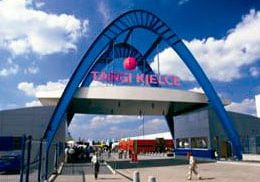Part three of this three-article series takes a look into the use of elevator shunt trips from a Canadian perspective.
by Dan Winslow, CEIS
Shunt Trip from a Canadian Perspective
In Canada, under the National Building Code of Canada (NBCC) and ASME A17.1/CSA B44, the entire issue of “shunt trip” has been effectively “taken off the table.” Canada has chosen to ignore the concern with the possibility of sprinkler water effecting elevator controls in favor of a policy based on the assumption that an elevator machine room with a smoke detector installed in it would likely initiate elevator recall prior to sprinkler water causing any serious concern with the elevator operation. In Canada, it’s shunt trip that’s prohibited, not the sprinklers!
The machine-room sprinkler is required to have an intermediate (or higher) temperature classification rating
(minimum of 93ºC/200ºF) but is allowed to be present in the machine room without a shunt-trip operation. In contrast to the original 1984 opinion of the American Society of Mechanical Engineers (ASME) committee in the U.S. that shunt trip was necessary because sprinkler water was considered a significant concern to elevator controller operation, in Canada, it was the shunt trip itself that was considered a bigger threat to the public than sprinkler water. This method preserves the fire protection of sprinklers and eliminates the need for a time limit for recall operation, but does not protect against the ASME committee’s original concern that the elevator controls may be affected by sprinkler water application.
Definitions
Some definitions in the model codes can be conflicting or confusing. For the purposes of these articles (ELEVATOR WORLD, December 2010, January 2011), the following standard industry terms are used:
- Elevator Control: A generic term that includes any electrically energized elevator component that is directly connected to the elevator power and permits the elevator to move
- FACU: Fire alarm control unit (panel) as it relates to the elevator, refers to the Fire Alarm Control Panel that provides signals to the elevator controller for recall.
- FAID: Fire alarm initiating devices, as defined by NFPA 72 as a “system component that originates a change-of-state condition.” As it applies to elevators, FAID refers to smoke detectors, heat detectors or fire-sprinkler flow switches.
- Hoistway: The distance between the top of the elevator shaft and the pit floor, as defined by A17.1/B44
- Machine Room: Refers to that location containing the “Mainline Disconnect” (see below)
- Mainline Disconnect: This is the commonly used industry term described by NFPA-70 section 620.51 as the “disconnecting means.” It refers specifically to that single permitted “means” of removing elevator power from the motor controller.
- Motor Controller: Defined by A17.1/B44 as the “operative units of motion control”
- Pit: The area of the hoistway between the floor and the sill of the lowest elevator landing
- Shunt: In the context of electrical circuiting, means to “divert” or “transfer” electrical current. It should be understood that a true “shunt” circuit is not the method typically used by manufacturers for a shunt-trip breaker for elevators.
- Shunt trip: The term specifically refers to that “means” used to automatically remove power from the elevator controller. This is the term used in the International Code Council building code and is the common terminology in the industry. A17.1/B44 and NFPA-13 use the term for “Main Line Elevator power shutdown,” and in NFPA-70, it refers to it as “opening the power supply.”
- Shunt trip breaker: typically consists of a standard circuit breaker connected between the power supply and the elevator motor controller. In addition to the standard over current device intended to protect the circuit, the circuit breaker is provided with a separate voltage source to automatically “open or trip” the circuit. The “means” to remotely trip the breakers is usually a solenoid built into the circuit breaker which together comprise a single Underwriters Laboratory, Inc.-approved device. When energized by the outside voltage source the solenoid “trips” the circuit breaker and removes
Get more of Elevator World. Sign up for our free e-newsletter.









